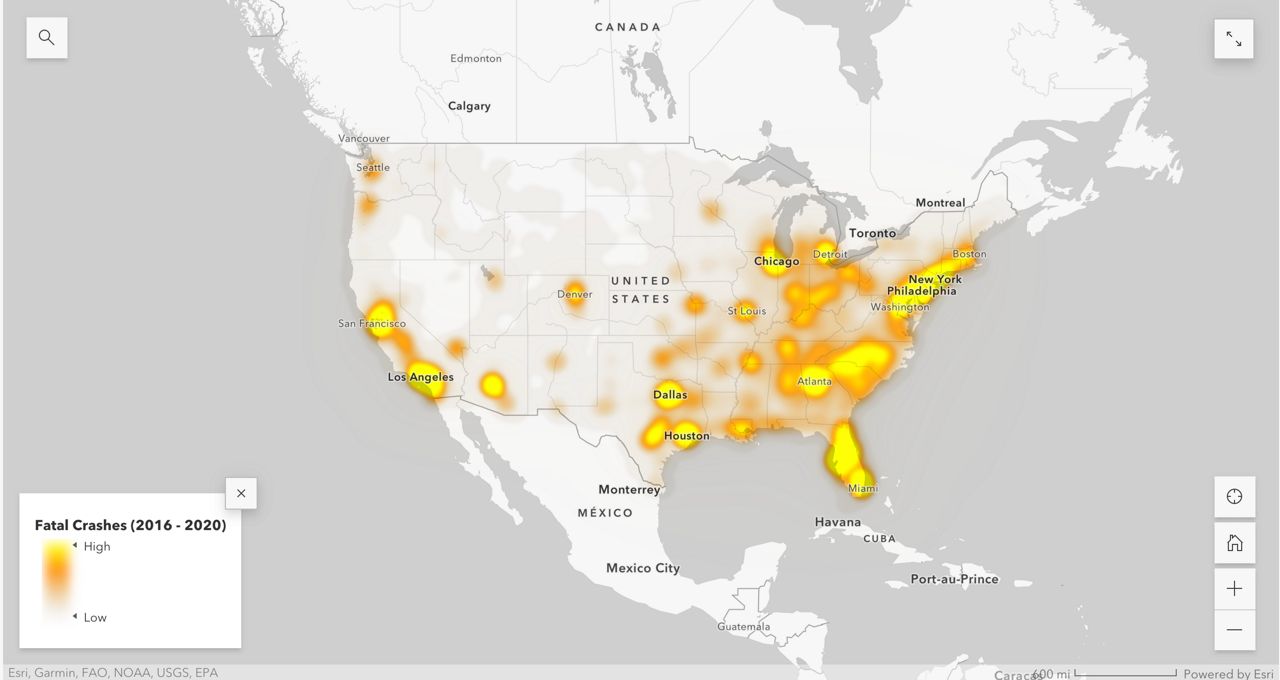CHARLOTTE, N.C. — When Henry Wheeler looks out over Monroe Road in South Charlotte, North Carolina, it brings back painful memories.
It’s the spot where a car hit and killed his brother, Daniel, a volunteer firefighter and employee at McDonald’s, as he was crossing the road in 2017.
“[I’d] seen him Sunday and he’s all happy-go-lucky and everything – and then you get a phone call Monday morning that he just got hit,” he told Spectrum News. “And then you get to the scene and he’s deceased. A part of you just bleeds out of you. It hurts. It really hurts.”
Wheeler remembered his brother as kind-hearted and eager to help people, which is why he became EMT-certified as a volunteer. He said it frustrates him to watch drivers get distracted by things like texting, knowing the consequences can be deadly.
“It only takes a couple seconds to change somebody’s life. It only takes a couple seconds to keep from changing somebody’s life,” he said. “People just get in too big of a hurry.”
Deaths from car crashes have spiked in recent years; nearly 43,000 people died on the road in 2021, a 16-year high. Multi-car crashes increased by 16%, and 13% more pedestrians died, according to federal data.
In a federal effort to drive those numbers down, the Biden administration on Wednesday announced more than 500 grants for cities and counties across the country to move forward projects that will prevent deaths on the road.
“The status quo is unacceptable,” said Transportation Secretary Pete Buttigieg in an interview with Spectrum News. “I sometimes worry that precisely because we have all grown up surrounded by roadway deaths … that we've come to treat it as normal. It's not.”
The grants are worth $800 million from the bipartisan infrastructure law that President Joe Biden signed into law in late 2021.
A few dozen multi-million dollar awards will go to cities – including Charlotte, Tampa, Los Angeles, New York City and Columbus, Ohio – to make immediate improvements in areas where crashes often happen. A collection of smaller grants less than $1 million are for community planning projects, to help local leaders identify traffic problem areas and figure out improvements.
The grants are the first of their kind, from the new Safe Streets and Roads for All (SS4A) Grant Program, which provides $5 billion over five years from the infrastructure law.
How to prevent deaths varies from high-crash area to high-crash area. In some cases, Buttigieg said, it’s a matter of adding a crosswalk or better lighting. Other times it requires a complete redesign of an intersection.
“We're not going to have all the answers here in Washington. The communities will develop answers and search for answers. And we will fund that process,” he said. “We're putting a premium on evidence, data-driven strategies.”
Charlotte will receive more than $4.4 million, for example, to implement “proven” measures under its Vision Zero initiative, which aims to reduce traffic deaths to nothing by 2030.
For Wheeler, he thinks a pedestrian crosswalk with flashing lights could make Monroe and other roads safer. In the almost six years since he lost his brother, he said he hasn’t seen any such improvements for pedestrians.
“Life goes on. We cope with it. But we never forget it and it never goes away,” he said. “I hope that they put this money to good use.”
The Department of Transportation this week also launched a data visualization tool that shows crash hotspots around the U.S., allowing you to see the problem areas in your city or county.

Sec. Buttigieg, the former mayor of South Bend, Indiana, told hundreds of mayors at their annual Washington conference last month that traffic deaths are almost as common as gun violence.
“We are so used to it,” he said at the U.S. Conference of Mayors, noting the variety of new resources in the infrastructure law. “I want to ask for your help.”
The secretary first announced last year a National Roadway Safety Strategy with the long-term goal of zero deaths on U.S. roads. It includes five focuses: encouraging safer driving, better road design, safer vehicle technology, tackling speeding and improving access to emergency care.
Buttigieg highlighted several cities who have achieved zero traffic deaths per year: Jersey City, Hoboken, Evanston, Ill. and Edina, Minn.
“Nobody is under any illusion that we're going to get to zero overnight as a country,” he said in the interview with Spectrum News. “But these cities have helped lead the way by showing the communities with tens of thousands of people can go a year, sometimes multiple years, without losing a single life to a crash.”
He encouraged mayors to take advantage of the SS4A grants in their next four years – and to keep safety in mind as millions of other infrastructure dollars flow to their states.
“Done right, every infrastructure choice is also a safety choice,” he said.



